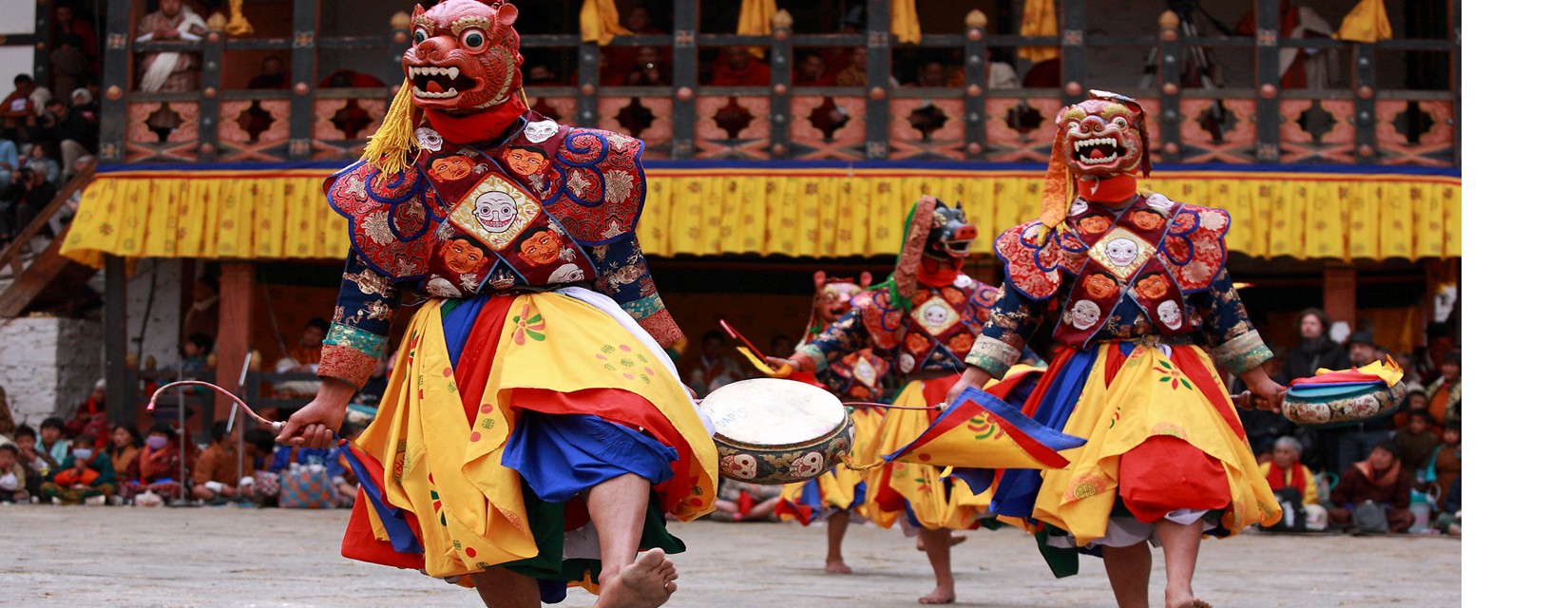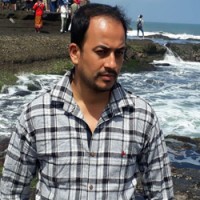About Paro Festival Tour 24 - 25 Mar 2026 - 5 Nights 6 Days
Paro Festival Tour 24th March - 25th March 2026
The Paro Festival Tour with Himalayan Asia Treks is an extraordinary journey that takes you to the heart of Bhutan's cultural and spiritual heritage. Bhutan, a small and secluded kingdom nestled in the Himalayas, is known for its pristine natural beauty, unique culture, and rich traditions, and the Paro Festival Tour offers a rare opportunity to immerse yourself in this captivating world.
Paro Tshechu Festival is one of the most vibrant Bhutan Festivals, celebrated annually at Paro Rinpung Dzong. As the Biggest Festival in Bhutan, it features mesmerizing Mask Dances in Bhutan, performed by monks and lay dancers to honor Guru Rinpoche. Alongside Thimphu Tshechu, this Bhutan Religious Festival is a highlight of any Bhutan Cultural Tour, attracting visitors eager to witness Bhutan’s rich spiritual traditions. The Paro Festival 2026 will be a grand spectacle, offering insight into Bhutanese heritage. According to the Bhutan Tshechu Calendar, the Best Time to Visit Bhutan Festivals is during spring and autumn when the weather is pleasant, and celebrations are in full swing.
The Paro Festival, also known as Paro Tshechu, is one of the most important religious celebrations in Bhutan, and it is a vibrant display of the country's rich cultural tapestry. The festival typically takes place in the spring season and features masked dances, colorful costumes, traditional music, and religious ceremonies that pay homage to Guru Rinpoche, the great saint who brought Buddhism to Bhutan. Witnessing these sacred rituals is a profoundly moving experience, as it offers a deep insight into the spiritual essence of the Bhutanese people.
Note: If you want to explore only Bhutan Paro Festival Tour only then contact us.
Paro Tshechu, one of the most celebrated festivals in Bhutan, will take place in 2026. This vibrant event, held in Paro, features masked dances, cultural performances, and traditional music, drawing both locals and tourists. The Thimphu Tshechu, another significant festival, will be celebrated from October 2 to October 4, 2025. Additionally, the Rhododendron Festival, showcasing the blooming of rhododendrons and Bhutan's rich biodiversity, will occur in April 2025, with specific dates yet to be confirmed. These festivals provide a unique glimpse into Bhutanese culture and traditions, making them popular attractions for visitors organized by Himalayan Asia Treks and Expedition Pvt Ltd.
Himalayan Asia Treks, a reputable tour operator in the region, ensures that your Paro Festival Tour is not only culturally enriching but also comfortable and well-organized. Their experienced guides and staff are well-versed in the intricacies of Bhutan's culture and history, and they provide valuable insights throughout the tour. They take care of all the logistics, from accommodations in traditional Bhutanese guesthouses to transportation, allowing you to focus on enjoying the festivities and connecting with the local people.
Aside from the festival itself, the tour includes visits to some of Bhutan's iconic attractions. Paro, with its stunning Paro Taktsang (Tiger's Nest) Monastery precariously perched on a cliff, is a highlight of the trip. The trek to Tiger's Nest is an unforgettable experience and offers breathtaking views of the Himalayan landscapes. You'll also have the chance to explore the capital city, Thimphu, where you can discover Bhutan's unique blend of tradition and modernity.
The Paro Festival Tour with Himalayan Asia Treks is not just a typical tourist experience; it's a journey of cultural immersion and spiritual discovery. It provides a rare opportunity to witness the Bhutanese people's unwavering devotion to their ancient traditions and the profound impact of Buddhism on their daily lives. This tour allows you to create lasting memories and forge deep connections with the warm and hospitable Bhutanese people while exploring one of the world's most enchanting and unspoiled destinations. It is an adventure that will leave you with a newfound appreciation for Bhutan's unique heritage and a deep sense of spiritual enrichment.
Paro Festival Tour 2026 from Nepal
Bhutan is celebrating the Paro Tshechu / Festival in the spring - Bhutan Festival Date is 21st March– 25th March 2024 from Nepal. It is a wonderful time to visit Bhutan, experience its ancient culture, and get enthralled by the celebrations. Amid blossoming flowers and lush green landscape, the Festival comes alive with vibrant colors, music, dances, and other sacred rituals. Mask Dance and music play an important role in the cultural life of the Bhutanese people and are performed to convey religious messages and righteous ways of living to the people.
The Paro Tshechu is a Buddhist Festival and one of the major annual events of Bhutan. The Tshechu holds religious significance and is held to commemorate the birth anniversary of Guru Padmasambhava, the patron saint of Bhutan who introduced Tantric Buddhism in Bhutan. Festivals are held mostly in the huge courtyards of the magnificent Dzongs/Fortresses and comprise colorful masked dances and traditional folk songs and dances attended by even more colorfully dressed Bhutanese people. As per the Lunar calendar, the Paro Festival falls during the Spring and is one of the most beautiful times to visit Bhutan. Weather-wise the days will be bright and sunny with a clear view of the snow-capped Himalayan Mountains and evenings and mornings will be pleasant but also a little cold.
The Paro Festival, also known as Paro Tshechu, is one of the most popular and significant religious festivals in Bhutan. Tshechus are annual religious festivals held in various districts and monasteries throughout Bhutan, but the Paro Tshechu is particularly famous due to its location and grandeur. Here's some information about the Paro Festival tour:
Location and Timing:
- The Paro Festival usually takes place in the Paro Rinpung Dzong (a fortress-monastery) in Paro, Bhutan.
- The timing of the festival varies from year to year as it follows the lunar calendar. It typically occurs in March or April, depending on the Bhutanese lunar calendar.
Festival Highlights:
- The Paro Festival is a vibrant and colorful celebration of Bhutanese culture and religion. It features masked dances, traditional music, and various performances that depict Bhutanese mythology, legends, and history.
- The main attraction of the festival is the Cham (masked dance) performances performed by monks and laypeople. These dances are not only religious but also highly entertaining.
- The festival also includes the unveiling of the sacred Thongdrol (a large religious scroll) early in the morning on the final day. Viewing the Thongdrol is believed to cleanse one's sins and bring blessings.
Tour Experience:
- To experience the Paro Festival, you can join a guided tour to Bhutan, as independent travel to Bhutan is restricted.
- Tour packages typically include accommodation, meals, transportation, and the opportunity to witness the festival.
- You'll have the chance to immerse yourself in Bhutanese culture, watch the traditional dances, and interact with locals.
- The tour may also include visits to other cultural and historical sites in Bhutan, such as the Paro Rinpung Dzong, Tiger's Nest Monastery (Taktsang), and Thimphu, the capital city.
Preparations:
- If you plan to attend the Paro Festival, it's essential to book your tour well in advance, as Bhutan has a limited number of tourist visas issued each year.
- Dress appropriately for the festival, as Bhutanese people take their traditional clothing seriously. For men, this typically means a gho, and for women, it's a kira.
Respect Local Customs:
- While attending the festival, it's crucial to respect local customs and religious traditions. Photography may be restricted during certain parts of the festival, and it's important to follow any instructions given by festival organizers.
Flight information to Paro
Paro International Airport in Bhutan is the sole international airport in the country and is served by two main airlines: Druk Air and Bhutan Airlines. Flights to Paro are available from several international cities, including Kathmandu, Bangkok, Delhi, Singapore, and Dhaka. Due to the challenging terrain and weather conditions, flights to Paro are carefully scheduled, with most flights operating in the morning to take advantage of clearer skies. The frequency of flights may vary depending on the season, with more flights typically scheduled during peak tourist seasons, such as spring and autumn. It's advisable to book flights well in advance, as seats can be limited. For booking seat , you can check the Druk Airlines or Contact us.
The Paro Festival tour offers a unique opportunity to witness Bhutanese culture and spirituality in a truly spectacular setting. It's a chance to immerse yourself in the rich traditions of this Himalayan kingdom and witness the devotion of its people to their religion and heritage.
If you want to customize Paro Festival Tour from Nepal, please contact our Trip Planner: [email protected] or +9779802098880 (Whatsapp or Viber)



